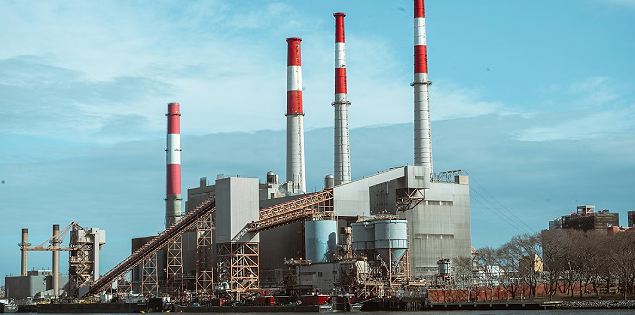As the global community intensifies efforts to mitigate climate change, Carbon Capture, Utilization, and Storage (CCUS) technology has emerged as a pivotal tool in the transition to a low-carbon economy. CCUS is, “the process of capturing carbon dioxide (CO2) emissions from fossil power generation and industrial processes for storage deep underground or re-use”. The technology is seen as essential for offsetting emissions from hard-to-abate sectors such as cement, steel, and chemicals.
It has also been identified as an enabler of low-carbon hydrogen production, which can potentially support the decarbonisation of other parts of the energy system, such as industry, and transport. Cement, blue hydrogen, iron and steel, and power together are projected to account for around 85 percent of total uptake by 2050. The capacity of all CCUS facilities under development is expected to grow to over 420 million tons of CO₂ per annum by 2030, an increase of more than 40 percent since 2022. This rapid expansion underscores the growing recognition of CCUS’s importance in achieving climate goals.
Despite its potential, CCUS faces several challenges that hinder its widespread adoption. One of the primary obstacles is the high cost of implementation. Building the necessary infrastructure for CCUS, such as capture equipment and storage facilities, requires substantial investment. For instance, full costs for CCS projects – including capture, transportation and storage – currently average US $58 per tonne of CO2, with two-thirds of the project’s lifetime costs to be borne upfront. Additionally, the technology is still in the early adoption stage for many applications, requiring further development and demonstration to become commercially viable.
Another significant challenge is the lack of regulatory and policy frameworks to support CCUS deployment, through clear guidelines and incentives to encourage investment. Given the important role that these technologies would play in meeting net-zero goals, CCUS represents an global investment opportunity of US $196 billion over the next decade. In the absence of policy frameworks, private companies are reluctant to invest due to the high financial risks involved. Furthermore, there is a disconnect between the maturity of CCUS technologies and the sectors where they are most needed. For example, within hard-to-abate sectors like the cement industry, which are heavily dependent on carbon capture technologies to achieve net-zero emissions, require advanced CCUS solutions, but the technology is still at the demonstration stage in this sector.
To overcome these challenges and fully leverage the potential of CCUS in the low-carbon transition, a multi-faceted approach is needed. This approach should focus on technological innovation, policy support, and leveraging climate finance.
Technological Innovation
Advancements in CCUS technology are crucial for reducing costs and improving efficiency. Innovations such as modular capture systems and hybrid capture technologies can enhance the techno-economic performance of CCUS. For instance, commissioned in Texas, US in 2018, NET Power’s 50 MW clean energy facility is a pioneering natural gas-fired power plant that utilizes Allam cycle technology. This innovative approach employs CO2 as a working fluid within an oxyfuel supercritical CO2 power cycle, potentially greatly reducing carbon capture costs as well as allowing the capture of nearly all CO2 through the process.
Policy Support
Governments play a vital role in creating a conducive environment for CCUS deployment. Strategic signalling, public funding, and cross-border collaboration are essential to drive the adoption of CCUS. For example, the European Commission’s Net Zero Industry Act and the UK’s Climate Change Committee have identified CCUS as a necessity for achieving net-zero targets, providing policy roadmaps and financial support to kickstart the market. In the US for example, significant funding has been allocated to CCUS programs through legislative acts, and additional facilities are being developed to increase capture capacity. In December 2023, the Congressional Budget Office noted that 15 CSS facilities in the US had the capacity to capture 0.4% of the country’s total annual CO2 emissions.
Leveraging Climate Finance
Climate finance is critical for scaling up CCUS projects, particularly in developing countries. Mechanisms such as carbon credits and carbon emission reductions (CERs) can provide financial incentives for CCUS investments. International collaboration through platforms like the Clean Energy Ministerial CCUS Initiative can facilitate investment opportunities and disseminate best practices. Furthermore, insurance services and ESG (Environmental, Social, and Governance) frameworks can help manage the risks associated with CCUS projects, making them more attractive to investors.
Conclusion
CCUS technology holds significant promise for reducing global CO₂ emissions and achieving climate goals. However, its widespread adoption requires overcoming substantial financial, technological, and regulatory challenges. By fostering technological innovation, implementing supportive policy frameworks, and leveraging climate finance, CCUS can play a pivotal role in the transition to a low-carbon economy. As momentum builds and more projects reach final investment decisions, the path to a sustainable future becomes clearer, with CCUS as a cornerstone of global decarbonization efforts.
Bibliography
https://unece.org/sustainable-energy/cleaner-electricity-systems/carbon-capture-use-and-storage-ccus
https://www.iea.org/energy-system/carbon-capture-utilisation-and-storage
https://www.kapsarc.org/news/carbon-capture-and-storage-cheaper-in-gulf/
https://commercial.allianz.com/news-and-insights/expert-risk-articles/ccus-technologies.html
https://netpower.com/technology/
https://www.iea.org/reports/ccus-in-clean-energy-transitions/ccus-technology-innovation

